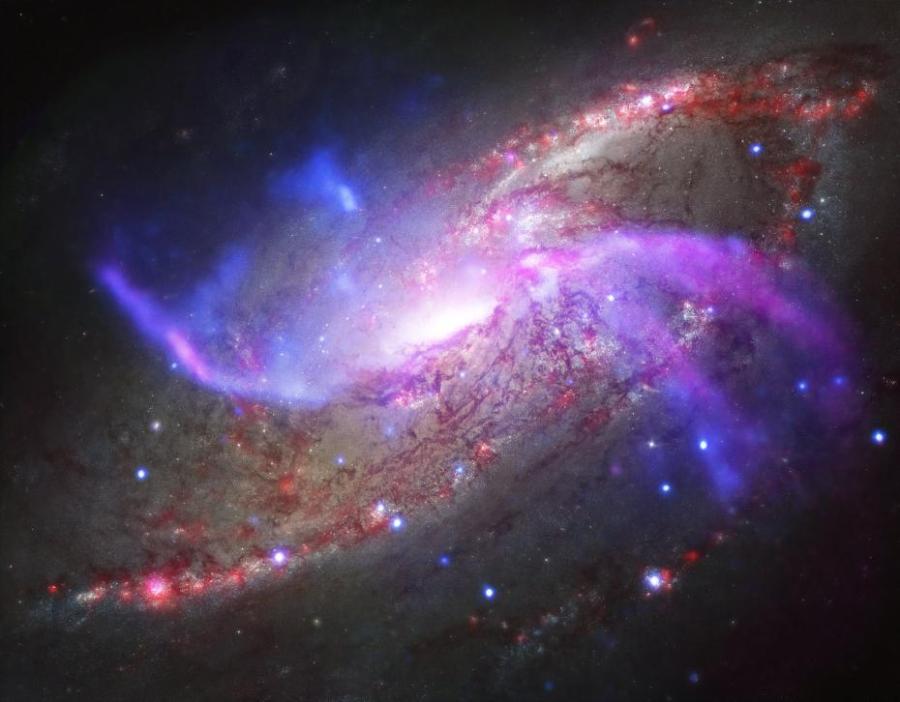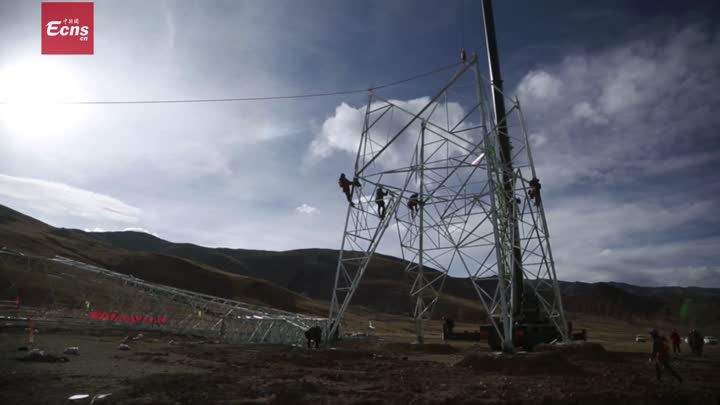
A galaxy about 23 million light years away is the site of impressive, ongoing fireworks. Rather than paper, powder and fire, this galactic light show involves a giant black hole, shock waves and vast reservoirs of gas. This galactic fireworks display is taking place in NGC 4258, also known as M106, a spiral galaxy like our own Milky Way. This galaxy is famous, however, for something that our galaxy doesn’t have?two extra spiral arms that glow in X-ray, optical and radio light. These features, or anomalous arms, are not aligned with the plane of the galaxy, but instead intersect with it. The anomalous arms are seen in this new composite image, where X-rays from NASA’s Chandra X-ray Observatory are blue, radio data from the NSF’s Karl Jansky Very Large Array are purple, optical data from NASA’s Hubble Space Telescope are yellow and infrared data from NASA’s Spitzer Space Telescope are red. (Photo/NASA)

A galaxy about 23 million light years away is the site of impressive, ongoing fireworks. Rather than paper, powder and fire, this galactic light show involves a giant black hole, shock waves and vast reservoirs of gas. This galactic fireworks display is taking place in NGC 4258, also known as M106, a spiral galaxy like our own Milky Way. This galaxy is famous, however, for something that our galaxy doesn’t have?two extra spiral arms that glow in X-ray, optical and radio light. These features, or anomalous arms, are not aligned with the plane of the galaxy, but instead intersect with it. The anomalous arms are seen in this new composite image, where X-rays from NASA’s Chandra X-ray Observatory are blue, radio data from the NSF’s Karl Jansky Very Large Array are purple, optical data from NASA’s Hubble Space Telescope are yellow and infrared data from NASA’s Spitzer Space Telescope are red. (Photo/NASA)























